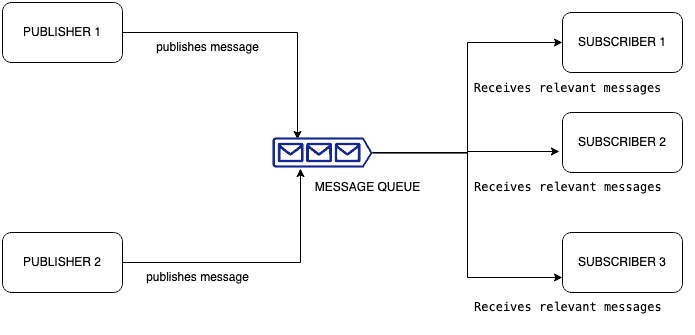Message queues
Basics
- a queue that holds messages to be processed asynchronously, but sequentially
- example uses:
- sending data from one service to another to be processed
- distributing tasks across multiple servers
- processing orders and payments on an online store
- processing bank transactions
- messages can be held even when the services consuming them are offline or busy
- messages are in a standardized format, so it doesn’t matter what language or platform the connected services run on
- producer/sender/publisher: a service that creates messages and puts them in the queue
- consumer/receiver/subscriber: a service that takes messages from the queue and processes them
- topic: a way to group messages, so that consumers can subscribe to only the subset of messages that are relevant to them
- message broker: the service that manages the message queue
- dead letter queue (DLQ) or dead letter exchange (DLX): a queue which holds messages that have expired or failed to process, letting them be inspected before moving back into a source queue
Publisher-Subscriber (pub-sub) model
- allows communication between multiple publishers and multiple subscribers using topics
- loosely coupled - publishers don't have to know anything about the subscribers, and vice versa

Examples
RabbitMQ
- simple linear queue
- push-based - messages are pushed to consumers (but a limit can be configured)
- "smart broker/dumb consumer" - the broker pushes messages to consumers, at which point they are removed from the queue
- very fast and reliable, can be distributed across clusters of nodes with fault tolerance
- supports standardized protocols like AMQP, MQTT, and STOMP
Kafka
- uses the pub-sub model (topic-based)
- pull-based - consumers pull messages from queues in batches
- "dumb broker/smart consumer" - the broker doesn't track which messages are read, all messages are kept for a certain period of time (so Kafka can act as a log)